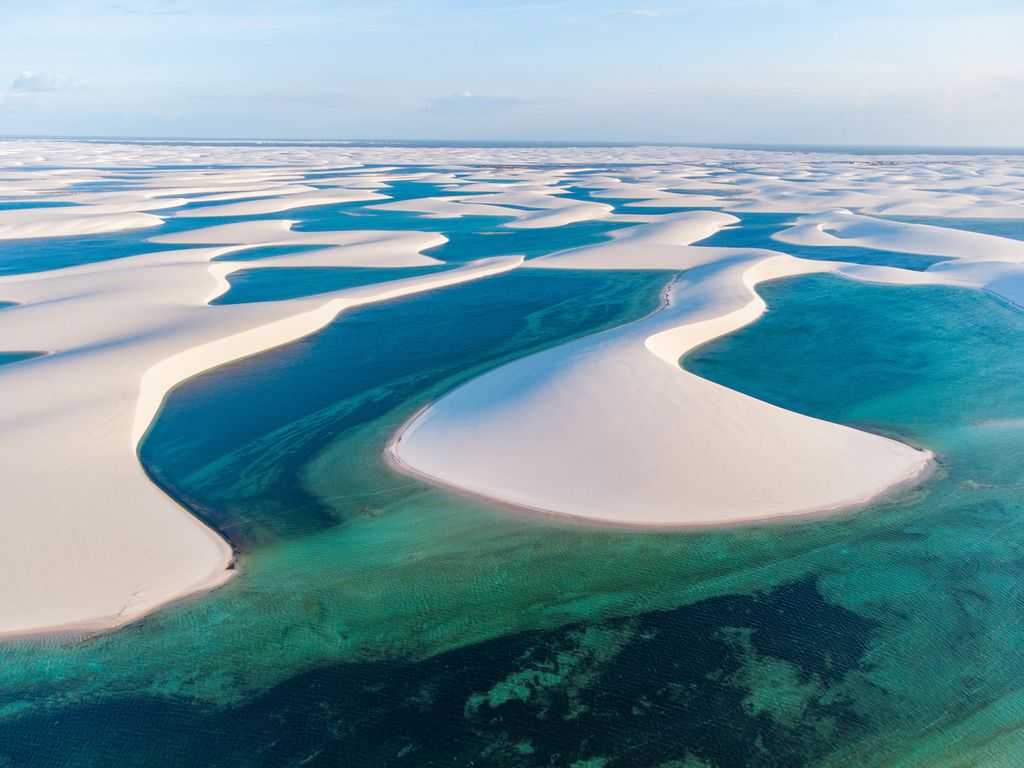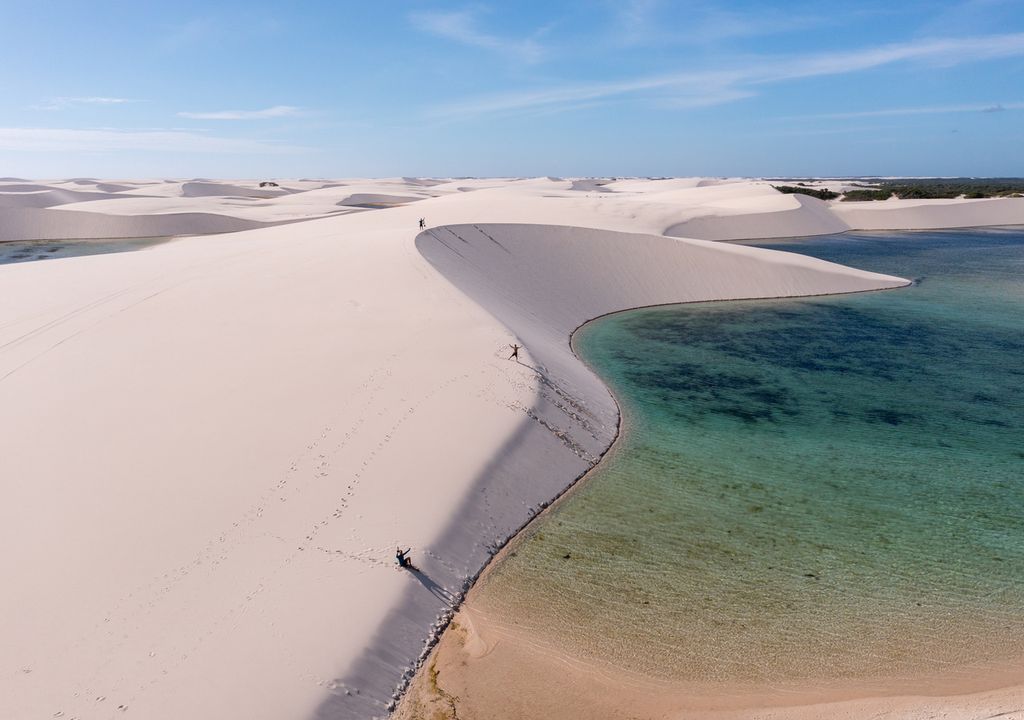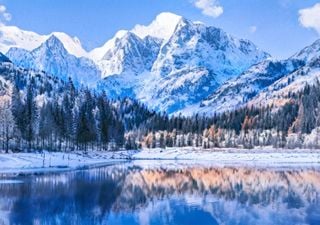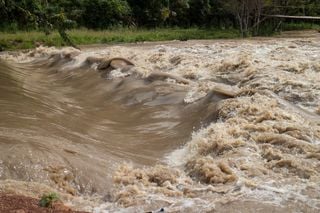This mind-blowing 'desert' has natural lagoons of crystal clear waters between mountains of sand of more than 30 metres
This stunning national park is home to a "unique desert" in Brazil, where vast white dunes intersect with turquoise lagoons, creating a landscape that seems straight out of another planet.

Located in the state of Maranhão, in the northeast of Brazil, the Lençóis Maranhenses National Park is a natural wonder that defies the expectations of what a desert can be. The Preguiças River divides this unique natural space to its mouth in the Atlantic Ocean.
This unique park extends over more than 1550 square kilometres and is famous for its vast white sand dunes interspersed with freshwater lagoons, creating a landscape that seems to be taken from a story. Next, we will analyse the characteristics, the geological formation, the biodiversity and the activities that can be carried out in this incredible place.
Mountains of sand and depressions flooded by fresh water
The Lençóis Maranhenses, whose name would mean "Sheets of Maranhão", owe their place name to the extensive and undulating dunes that resemble unfolded white sheets. The dunes can reach up to 40 metres in height and extend as far as the eye can see, creating a sea of sand that constantly moves with the wind.

What makes this desert unique is the presence of freshwater lagoons that form during the rainy season, from January to June. These lagoons, turquoise blue and emerald green, contrast with the white sand, creating an impressive visual spectacle.
The lagoons are fed by rainwater that filters through the sand and accumulates in natural depressions, forming swimming pools that can reach several metres deep. The Lagoa Azul, the most famous in the area, allows it to bathe in crystal clear waters and stands out for its imposing beauty.
This is its geological origin
The origin of the Lençóis Maranhenses goes back millions of years. The dunes are formed by quartz sand that was transported by the wind from the nearby Atlantic coast, and this continuous process has created a landscape of moving dunes that change shape and position over time.
The park also has a rich biodiversity although the conditions may seem arid, the area is home to several species of flora and fauna adapted to the environment.
In the areas of denser vegetation, near the rivers, mangroves and restinga forests can be found, which house species such as the guará (a type of crab), the carcará (a raptor bird) and the deer of the pampas.
What activities can be carried out in the Lençóis Maranhenses?
The Lençóis Maranhenses National Park offers a wide variety of activities for visitors. From walks on the dunes to boat rides on the nearby rivers, there is something for every type of adventurer.
- Trekking and hiking. There are trekking routes that cross the dunes and allow visitors to discover hidden lagoons and enjoy panoramic views of the sand and water desert.
- 4x4 rides. Tours that usually include stops at the largest and most picturesque lagoons, such as the Blue Lagoon and the Bonita Lagoon, where visitors can swim and relax.
The lagoons at Lençóis Maranhenses National Park ln Brazil
— Science girl (@gunsnrosesgirl3) April 20, 2024
pic.twitter.com/B94D3GZuIL
- Boat rides. The Preguiças and Formiga rivers, which cross areas near the park, offer the opportunity to take boat trips.
- Sandboarding. For adrenaline lovers, sandboarding is an exciting activity. Similar to snowboarding, sandboarding is practiced by descending the dunes on a board, offering a unique experience in this desert environment.








